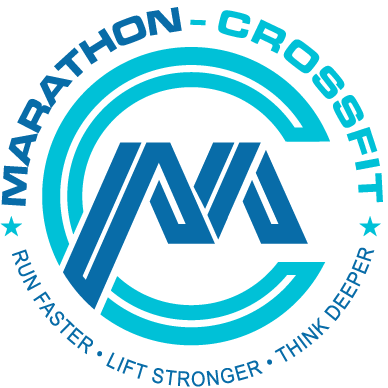TITAN Cast iron plates vs Rogue wagon wheel
This is a comparison between the TITAN cast iron plates and the Rogue wagon wheel including pros, cons, and alternatives. It was published first under which titan plates to get. Follow the links for more details.
Overview and review of the Rogue Wagon Wheel Pair
The Rogue Wagon wheel plates will set you back about $425. These plates are especially good to use for powerlifters who are serious about competing. This overview has originally been published in the article "Which rogue plates to buy" which you can find on this blog.
What else to consider from Rogue
- Which belt to buy from Rogue
- Which barbell to buy from rogue
- Which rack to buy from Rogue over $1000
- Which rack to buy from Rogue for under $1000
- Which plates to buy from Rogue
- Which strength equipment to buy from Rogue
- Which conditioning equipment to buy from Rogue
- Which Equipment package to buy from Rogue
- Which accessory to get from Rogue
- Which jump rope to get from Rogue
- Which knee sleeve to get from Rogue
Overview of the Wagon wheel plates
The Wagon wheel plates are a co-design between Mark Bell and Rogue. The basic idea is that a standard 45LB can be bigger than 450mm. The result is a pair of plates which have 660mm in diameter and are therefore called Wagon wheels. If you do not want to buy blocks save storage space for block pulls, this is the way to go. Specs of the wagon wheel plates:
- Made in the USA
- 0.375'' thick laser cut steel construction
- 45LB
- 2% Weight tolerance
- 660mm Diameter
- 50.80mm width
This is a specialized tool when you get serious with your powerlifting to get more volume in without wrecking your lower back. They also cost less than proper pulling blocks. If you only need blocks for powerlifting purposes, this is a great option which is easy to store in your gym.
Pros of the Wagon wheel plates
The Wagon wheel saves space and time when you want to deadlifts from a block. They also cost less than their wooden or metal blocks which fit the same purpose from Rogue.
Cons of the wagon wheel plates
The Wagon wheel cannot be used for Olympic weightlifting style block pulls or jerking. For jerking, they are too low and for dynamic block pulls the metal is too hard on the floor and wrists of the lifter. For Olympic weightlifting, you are better off to buy proper jerk blocks.
Alternatives to the Wagon wheel plates
The metal jerk blocks from Rogue are adjustable in height and beasts to behold. These are space saving compared to their wooden counterparts as you do not need multiple of them to stack higher up.
Wooden jerk blocks take up more space in your gym than the metal blocks offer the same height options, but are in turn more modular. With one full set, several athletes can train from different starting positions.
Overview and review of the TITAN Cast iron plates
This is an overview of the TITAN Cast iron plates including pros, cons, and alternatives. It was published first under which titan plates to get. Follow the links for more details.
Related articles
- Which barbell to get from TITAN
- Which TItan Rack to get for over $500
- Which TITAN rack to get for under $500
- Where is Titan fitness equipment made
- Is Titan fitness good
Overview of the TITAN Cast iron plates
Price $24.99 - $419.99
Cast Iron plates are some of the cheapest and most durable plates you can buy if you tread them well. TITAN has a full range of plates from 2.5lb up to 45lb. Take care that the biggest plates are sold as singles and not in pairs when you fill your cart. There is nothing really fancy about Cast Iron plates. They are reliable, do not take up a lot of space, and make a nice clanging and banging sound. The full specifications of these plates are:
Simple, classic design built tough for daily use
Fits standard Olympic barbell sleeves
Durable silver hammered finish
Collar Opening: 50.5 mm
Material: Cast Iron
Weight Tolerance: +/- 2%
2.5 LB SPECIFICATIONS:
Plate Diameter: 162 mm
Plate Thickness: 15 mm
5 LB SPECIFICATIONS:
Plate Diameter: 178 mm
Plate Thickness: 21 mm
10 LB SPECIFICATIONS:
Plate Diameter: 228 mm
Plate Thickness: 29 mm
25 LB SPECIFICATIONS:
Plate Diameter: 300 mm
Plate Thickness: 38 mm
35 LB SPECIFICATIONS:
Plate Diameter: 360 mm
Plate Thickness: 38 mm
45 LB SPECIFICATIONS:
Plate Diameter: 448 mm
Plate Thickness: 38 mm
Fits standard Olympic barbell sleeves
Durable silver hammered finish
Collar Opening: 50.5 mm
Material: Cast Iron
Weight Tolerance: +/- 2%
2.5 LB SPECIFICATIONS:
Plate Diameter: 162 mm
Plate Thickness: 15 mm
5 LB SPECIFICATIONS:
Plate Diameter: 178 mm
Plate Thickness: 21 mm
10 LB SPECIFICATIONS:
Plate Diameter: 228 mm
Plate Thickness: 29 mm
25 LB SPECIFICATIONS:
Plate Diameter: 300 mm
Plate Thickness: 38 mm
35 LB SPECIFICATIONS:
Plate Diameter: 360 mm
Plate Thickness: 38 mm
45 LB SPECIFICATIONS:
Plate Diameter: 448 mm
Plate Thickness: 38 mm
These are great plates to start a budget gym if you do not intend to do any Olympic weightlifting. They can also be a good addition to your plate collection if you start training with more than 400lb on a regular basis and want to save sleeve space.
Pros of the TITAN Cast Iron plates
- Price
- Sound
- Space efficient
- Long-lasting
As with all TITAN fitness products, one of the main reasons to consider is their price. On almost all items they undercut the direct competition from Eleiko and Rogue by about half. That is their strategy is a company and if you do not mind minor and occasional major quality issues with your purchase, TITAN is a good bet. You definitely will get a lot more stuff from TITAN for the same budget, that is guaranteed.
Cast Iron plates are also nice compared to rubber plates as they make that clanging and banging noise when you train. Some people just love the dungeon feel and sound about these plates. If you get a particular pump and motivation out of training with iron plates, do not hesitate. They are not expensive and will at forever if treated well.
Cast iron plates also have an advantage in being space efficient. As they are made from iron they can be cut thinner than rubber to achieve the same amount of weight. The result is that they will take up less space on a plate tree and instead of maxing out most barbell sleeves at about 400 to 500 pounds you can now easily go up to 700 - 800lbs. That is not relevant for many athletes, but if you are a beast, this becomes very important.
The last thing about cast iron plates is that they will last forever if you treat them well. Competition and rubber plates will come apart at some stage between the different materials. Cast iron steel plates are just one big lump. If you do not drop them on the floor constantly or leave them in the rain over the weekend, this is a purchase for life.
Cons of the TITAN Cast Iron plates
- Finish
- Not all weather compatible
- Harsh on your body
- Design
If you push your product out at half the price of the competition you will need to cut some corners to still make a profit. Therefore you will find a higher rate of negative reports about TITAN fitness equipment than about Eleiko and Rogue. TITAN fitness equipment is more likely to have sharp edges, inconsistent finishes, or loose ends where the material is put together. There are also more reports about incomplete deliveries or rude customer services. This being said, you have to expect some shortfalls if you want to save half of your money. All of these aspects do not mean that you can not train, you will only have to either live with minor quality issues or apply some elbow grease to your equipment to oil, sand or adjust it.
All cast iron plates do not very well in damp environments. If you keep them outside or in a basement with moisture they will start to rust and turn weird colors. They are also not great for use outside as they either get damp or too hot to touch, depending on where you use them. Of course, hardcore training enthusiasts will say just get on with it, but it depends on who you are and what you want to use the plates for.
Cast iron plates are very unforgiving on feet, toes, fingers and other body parts they get in touch with. While rubber plates give in a little and therefore do not hurt as much when you land them on your toes or get your fingers between the in plate tree, cast iron plates surely will. If you have little ones at home who have access to your home gym or if you run a commercial establishment where it is sure that some idiots will handle the equipment, rubber is usually the safer bet to make injuries less likely.
The last point about cast iron plates is their design. It is basically non-existent unless you like the Brutalist approach. If you like raw metal that makes clanging noises you will feel like in heaven. Everyone else will get that kind of dungeon Rocky Balboa torture chamber vibe of them, which is not for everyone.
Alternatives to the TITAN Cast iron plates
If you do not want to spend more than $500 on a good set of plates your options are the Cast Iron plates and the two economy rubber plates from TITAN. If you do not work with more than 400lbs on a regular basis the rubber plates will probably be the better purchase. These are more forgiving on the users and also do not rust. Between the black and colored ones, it is mainly a matter of taste as the price does not defer a lot.
Conclusion for the TITAN Cast Iron plates
The cast-iron plates from TITAN are a great budget option for anyone who starts their home gym and already moves a lot of weight. If you are a complete beginner the economy rubber plates might be a better choice, as you will not max out your bar sleeve anyway and might want to use the plates outside and not always start to curse when you get your fingers between them.

